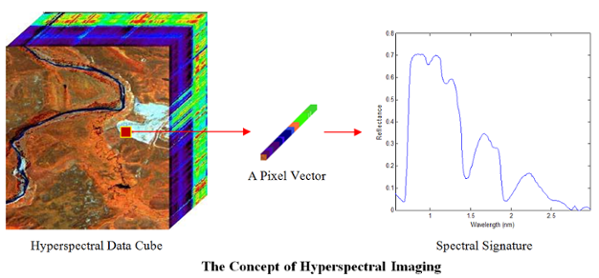Hyperspectral Data Processing
Hyperspectral Data Processing
Object Detection via Hyperspectral Imaging for Wide Area Surveillance
Background:
The science of hyperspectral remote sensing is based on taking a fraction of the electromagnetic spectrum and breaking it into numerous bands for theoretical analysis and computations. The combination of all wavelengths in a given spatial area builds complete spectral signatures for each specific material in the scene. Based on the spectral signature obtained from hyperspectral imagery, one can detect and identify objects more precisely compared to using only three bands information provided by a RGB camera.
Applications:
Hyperspectral sensors can also assist in automatic target detection in noisy backgrounds since objects vary uniquely from the natural background in absorbing and reflecting radiation at different wavelengths. In many cases, the objects that the human eye fails to capture can be differentiated and identified based on the unique hyperspectral signature. Accordingly the exploitation of various techniques for classifying hyperspectral images is expected to contribute to various kinds of applications, such as: crop type map-ping/monitoring, land use studies, forestry mapping, species identification, geological structure exploration, flood delineation, soil moisture identification, sea ice mapping, biomass mapping, ocean feature identification, oil leak/spill detection, etc. Our hyperspectral sensor provides 240 spectral channels that range from 400 - 900 nm with 2.1nm spectral resolution, and it can be used in outdoor and indoor data capturing.
Research Works
We intend to develop advanced algorithms to extract and enhance distinguishable features of various objects by analyzing hyperspectral data and employ novel classifiers to categorize various types of targets.

